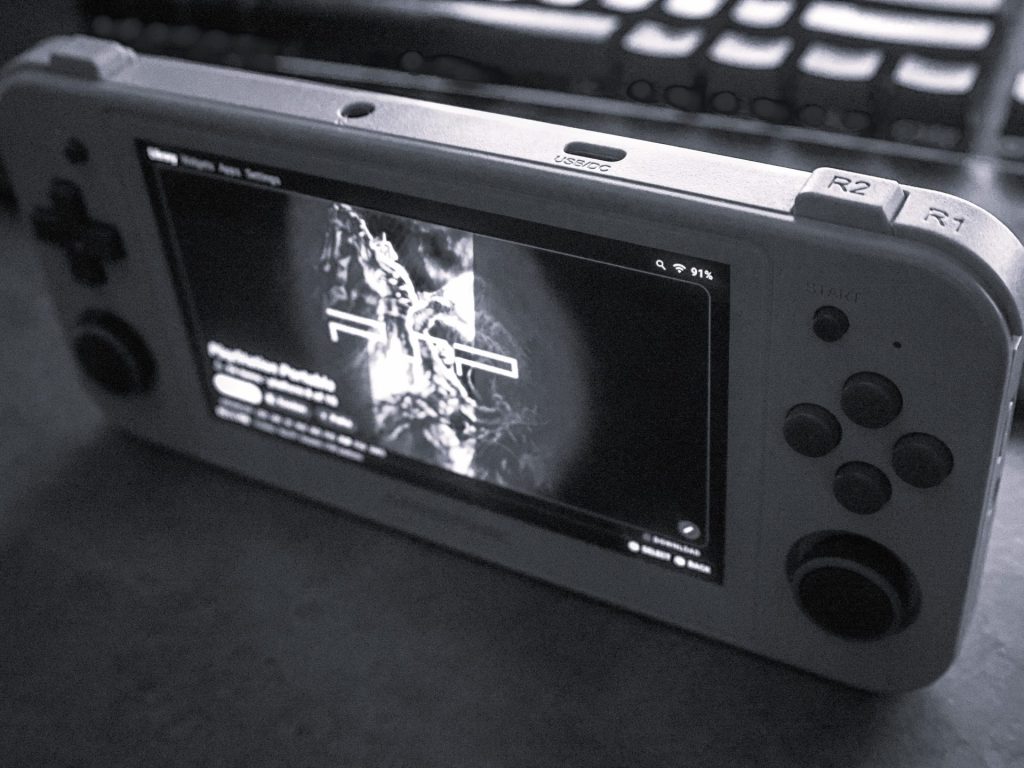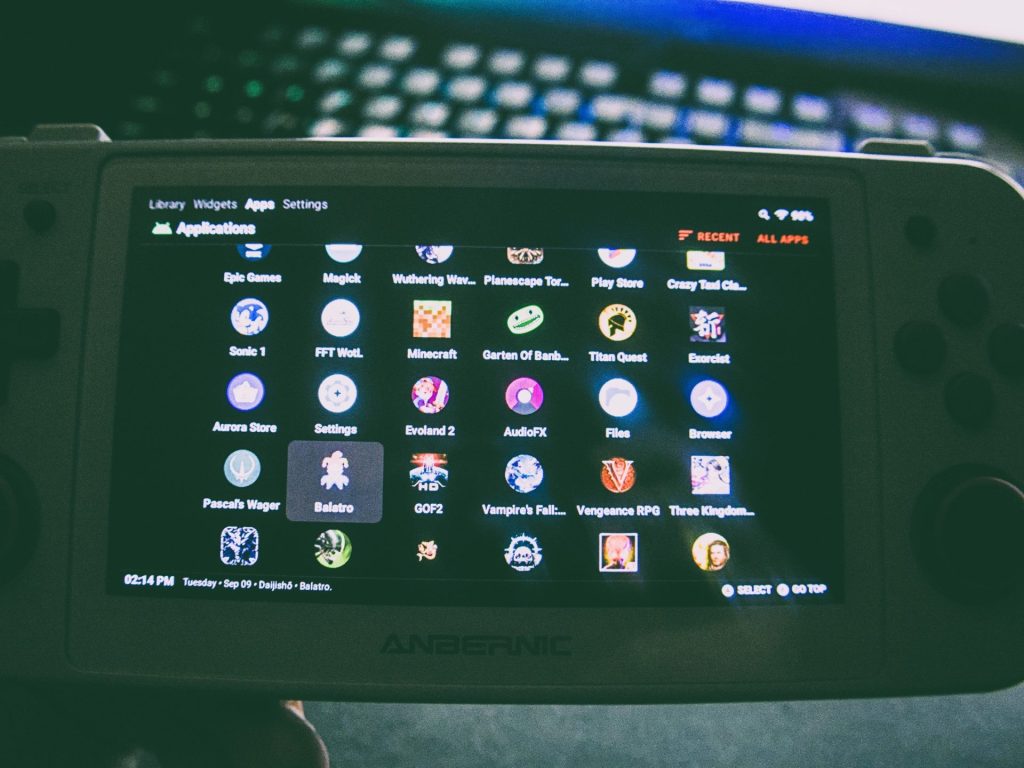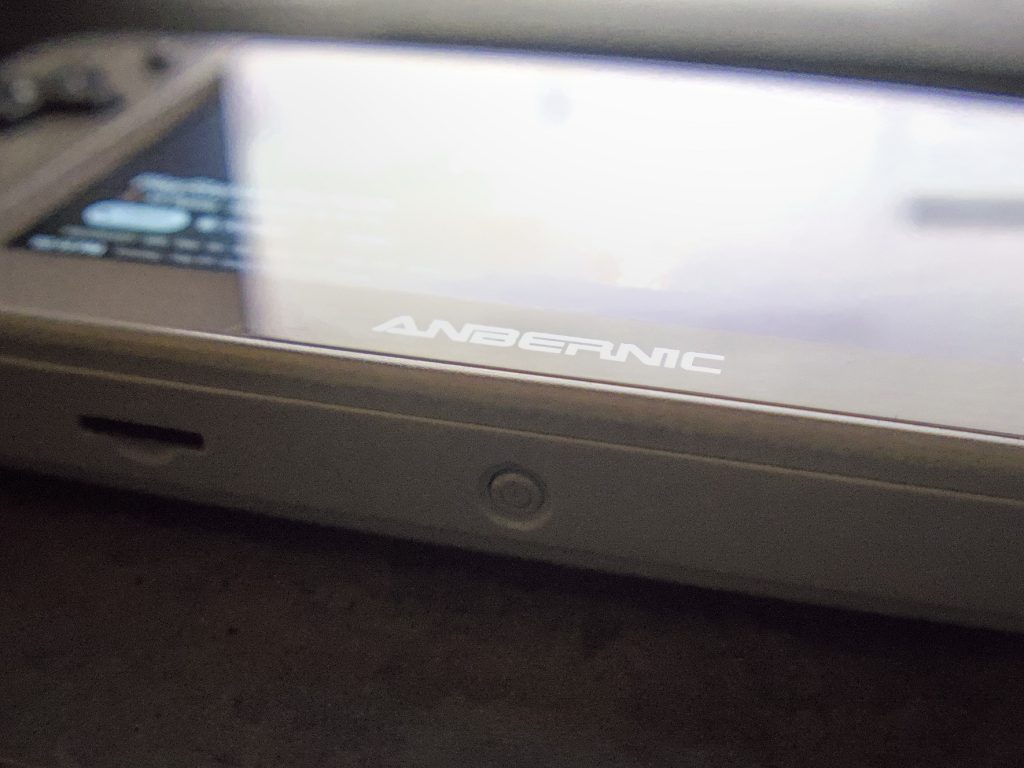I talk about my Steam Deck a lot I know. I probably sound like a broken record at times because I love it. But I know it’s not perfect. I wish the battery life were better. I also feel that sometimes it’s too big to lug around. Wanting something smaller, geared more towards emulation, I grabbed the Anbernic RG505 handheld. Don’t get me wrong. The Steam Deck does emulation great. Sometimes, it’s also good to have a smaller, more portable device you can take with you wherever.
Back when I grabbed the RG505, some of the more advanced stuff wasn’t out yet. The Retroid Pocket 5 didn’t exist. Neither did the Anbernic RG556, RG Slide, RG477M, and so on.
One thing stood out to me with the RG505, however. The OLED display. It has a 4.95-inch OLED touchscreen at a 960 by 544 resolution, excellent for PSP and 2x rendering. It’s the same screen as the PS Vita and I loved my Vita.
While it’s late in the game, and I wouldn’t recommend the RG505 now to anyone — because Anbernic has a lot of better options — I’m still reviewing it because it’s a testament to the company’s excellent build quality.
My RG505 is running GammaOS
 Source: Briley Kenney / Techigar
Source: Briley Kenney / Techigar Source: Briley Kenney / Techigar
Source: Briley Kenney / Techigar Source: Briley Kenney / Techigar
Source: Briley Kenney / TechigarAs soon as it was available, I installed custom firmware on my Anbernic RG505. I went with GammaOS for my particular device. It’s based on LineageOS 19.1 (Android 12) and has a debloated, better-performing setup. It also uses Daijisho launcher as the front-end, preconfigured for RetroArch and emulation. It’s smooth, snappy and satisfying.
It was super easy to install and flash. I won’t go through the instructions, but it didn’t take long, maybe 20 minutes in total.
I have been running this OS on my device as long as I’ve had it now, and it’s fantastic. If you own an Anbernic or a similar retro handheld, there are a lot of custom firmware options out there. I recommend considering one because the stock Anbernic firmware tends to be very basic, leaving out some much-needed features. GammaOS, for example, adds some custom button mapping, allows you to swap between performance and battery-saving modes, and take advantage of improved UI setups through the pre-installed apps, like Daijisho.
Primarily, I wanted to show that I have experience flashing a custom OS on my device(s) and working with one. I love tinkering. I will probably do something similar for any future devices I acquire.
Why own a smaller retro handheld like the RG505?
 Source: Briley Kenney / Techigar
Source: Briley Kenney / Techigar Source: Briley Kenney / Techigar
Source: Briley Kenney / Techigar Source: Briley Kenney / Techigar
Source: Briley Kenney / TechigarThe RG505 is pocketable. Straight up. It also fits in any bag, big or small, and I don’t have to worry about bringing along portable chargers or power banks. Often, I’ll bring it along with me on trips even if I bring my Steam Deck, but it goes with me on trips where my Deck stays home.
It plays systems all the way up to PS2, PSP, and that era. I might be able to squeeze a little more performance out of it, but if I want one of the newer systems, I’ll default to my Steam Deck. It makes more sense anyway. The RG505 runs PS2 and PSP well, two systems I wanted to use, with some popular titles working right out of the box essentially.
It also plays Android games and has access to Google Play, as well as a custom storefront through GammaOS.
The systems currently installed and working flawlessly include Dreamcast, Gameboy Advance, Gameboy Color, Gamecube, Nintendo 64, Nintendo Entertainment System, PlayStation 2, PSX, PSP and Super Nintendo. There are more, of course, like Sega, Game Gear, etc.
I use it to play older games, get in a few levels or tries, and some Android games. It handles Minecraft (for Android) really well, Bard’s Tale, Kotor, Stardew Valley, Dead Cells, and a few others. Bear in mind, some games still force you to use the touchscreen, and the built-in gamepad isn’t compatible — those are mostly Android games. A good example of this is Final Fantasy Tactics. For some reason, it only works with the touchscreen controls.
But in sharing the system breakdowns above, and noting the portability, that highlights the exact reason why I use my RG505 over my Steam Deck sometimes. It’s easy to bring along. It’s quick to pick up and play. The battery life is excellent for the most part, lasting me upwards of 7 or 8 hours. My kids also love it, and sometimes I’ll let them play the classics while I look on as a proud father.
The build quality is impressive
 Source: Briley Kenney / Techigar
Source: Briley Kenney / Techigar Source: Briley Kenney / Techigar
Source: Briley Kenney / Techigar Source: Briley Kenney / Techigar
Source: Briley Kenney / TechigarThe Anbernic RG505 is mostly plastic. I know there are some models with aluminum frames. I’m okay with the hard plastic, and it has a screen protector — they ship them with the consoles. The plastic is tough and the RG505 has held up well all this time even being tossed into a backpack when I was in a hurry. It’s survived several long road trips, several flights and even came with me to the Dominican Republic.
The only thing I added custom is joystick caps. The joysticks on the RG505 sit pretty low, and I didn’t like the feel of the stock caps. Now, everything is awesome.
I love the grips on the back. They’re a rubbery material and help your hands stay in place when you’re playing long, sweaty sessions. It’s pretty comfortable to hold while playing, too, and the buttons are all accessible even with big hands. No stick drift. No sticky buttons or broken seams. And I’ve had no issues with the OLED display or touchscreen.
The only thing I might change, or would request, is that the power button be moved to the top of the device or the side. As it stands, the power button is on the bottom. Not ideal, but not necessarily a bad thing either. You get used to it.
I know some of the newer devices with hinges have been known to have issues. I can’t speak on that, obviously. The RG505 is one long, candybar-style device.
What’s the verdict, and the price?
I do not recommend getting the RG505 today. It’s an excellent device. I love it as much as my Steam Deck, honestly, and it’s a fantastic portable companion. With GammaOS it can handle a lot of the retro systems I want and more.
But the caveat is that there are a lot of better, more capable devices for around the same price. The Anbernic RG556, Anbernic RG477M or the Retroid Pocket 5 are all great options. You also have some from AYN, ModRetro, AYANEO, and a few others. I recommend paying a visit to Retro Dodo if you want some in-depth reviews or retro handheld ideas.
I do recommend Anbernic overall. They make some high-quality systems, and even if you don’t want to fiddle with custom firmware, most work right out of the box. But as for this chonky guy, if you’re looking at buying a retro handheld today, I would say grab one of the newer, more advanced models. They’re virtually the same price for more power and more features.
- Recommended Buy: No. There are better options now.
- For Who: Retro (emulation) and Android gamers.
- Alternative: Anbernic RG 556, Anbernic RG477M or Retroid Pocket 5
- MSRP: $158













